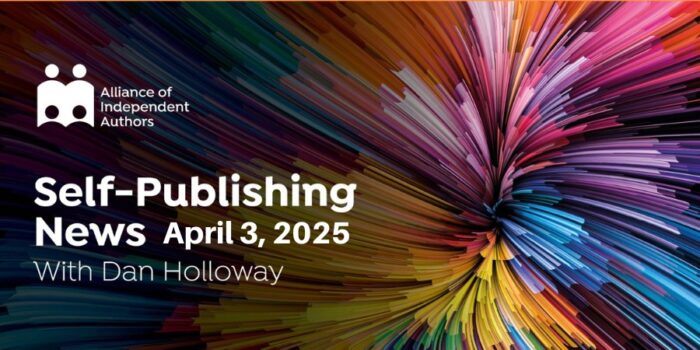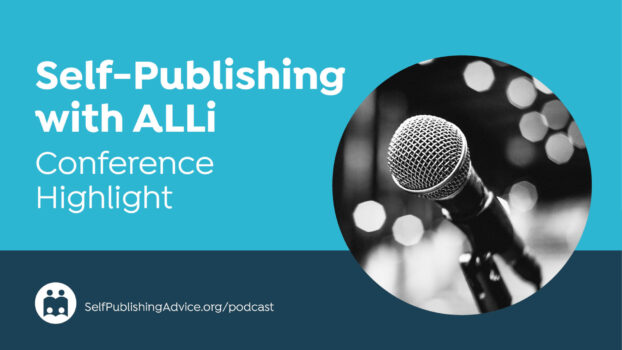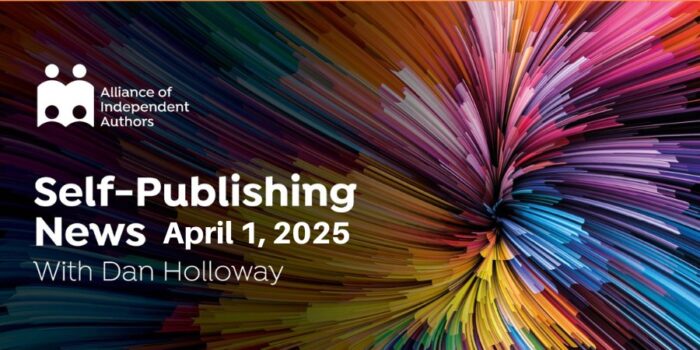
Discoverability is one of the key challenges facing independent authors. How do you get your book in front of readers and make an impression that could potentially lead to sales and enhance your credibility and visibility?
One solution is to make your book available to library patrons via an ebook loan system. Several services are stepping up to provide a link between your publishing platform and the ebook library infrastructure – mostly in the US, where there are thousands of libraries with the facility to loan ebooks.
Challenges
 Libraries are keen to offer self-published books, but with over 600,000 indie titles published every year in the US alone, librarians don’t have the time or resources to filter the good from the bad.
Libraries are keen to offer self-published books, but with over 600,000 indie titles published every year in the US alone, librarians don’t have the time or resources to filter the good from the bad.
Librarians face tight budgetary constraints. Traditionally, mainstream publishers have sold print copies to libraries at a high mark-up (often five to ten times the price paid by consumers). After the book is checked out twenty or thirty times, it may need to be replaced. Absurdly, this print model has been carried over into the digital age, with Digital Rights Management installed in the ebooks purchased by libraries which both limits the number of individual check-outs and requires a ‘copy’ to be re-purchased after an overall number of loans or a pre-set period.
Solutions
We looked at the three major services which connect independent authors to the ebook library system: ebooksareforever, SELF-e and OverDrive.
All of these services are operating in an emergent sector, and so there is no ‘perfect’ system. Independent authors should follow our assessment of each and decide which is right for their needs and philosophy at the current time, while also taking into account future intentions based on pledges we received from the business operators.
ebooksareforever
“A platform to help libraries sustainably purchase ebooks from independent authors and publishers.”
Launched: March 2014
Authors: Mark Dawson, Hugh Howey, CJ Lyons, Joanna Penn, HM Ward
The philosophy of ebooksareforever is based around sustainability. They believe that libraries should be able to buy ebooks at affordable prices and—since they are not physical, degradable items—own and offer them to loan for eternity.
Co-founded by authors JA Konrath and August Wainwright, ebooksareforever sells DRM-free ebooks with no re-licensing restrictions.
“We deliver a curated collection of titles from independent authors and independent publishers and make it as simple as possible for both the author/publisher and the library to interact with the collection and to fairly compensate the author/publisher for every transaction.”
—August Wainwright, co-founder
HOW IT WORKS
Every author and book is approved by a curation team. “We need this because we’re working hand in hand with libraries”, says Wainwright, “and we need to deliver what they’re asking for. We assess by reviews, number of titles the author has available, whether those titles are in a series, quality of cover art, interest in libraries, and genre saturation in our system. We couldn’t be taken seriously if, say, 80% of our titles were romance. It equally wouldn’t work if every book had to have at least 200 reviews on Amazon.”
If your book is rejected, you can reapply 60 days later.
Each book is purchased by a library on ‘perpetual license’. They pay once and they can use it forever. Only one copy can be checked out at a time.
DO AUTHORS GET PAID?
Yes. Titles are sold to libraries for $7.99 (full-length) and $3.99 to $4.99 for shorter works. Authors receive 70% of every sale.
FUTURE PLANS
ebooksareforever says it hopes to evolve the submission/rejection process once the business grows, but the current focus is on building a robust system which is trusted and popular with libraries.
They are also working on ‘patron apps’ which will break the business out of the US and allow global libraries to purchase titles with patrons loaning copies using universal apps. This system should also see broader opportunities for author payment.
There are also plans to allow libraries to purchase lower priced ‘unlimited use’ licenses, on approval of author/publishers. In this case, one copy could be checked out an unlimited number of times.
PROS
• Free to submit
• Author payment
• Set up by authors for authors
CONS
• Rigorous curation that favours series and higher-profile authors
• US-only
SELF-e
“A unique discovery platform for participating public libraries across the US that enables patrons to read ebooks on any device, at any time. This free discovery service is available to all authors with electronic rights, no matter which self-publishing service they use.”
Launched: Summer 2014
Authors: Hugh Howey, CJ Lyons
At the author level, SELF-e is built from the ‘permafree’ marketing concept, which values long-term author exposure over short-term income.
Ebooks are vetted by Library Journal, the national publication for the library community. If accepted, they are displayed to librarians via BiblioBoard’s loan and acquisition system which, it’s claimed, is used by around 2,700 libraries and reaches 30m patrons.
SELF-e has attracted criticism over its business model, which charges libraries to acquire titles but offers no royalty to authors. There are also serious questions over the relationship between SELF-e, through its parent company Library Journal, and the controversial publishing service provider Author Solutions.
ALLi also raised concerns over SELF-e’s connection to Library Journal’s ‘2015 Self-Published Ebook Awards’, urging changes to some ambiguous T&Cs, especially around “irrevocable” rights and other atypical language.
“SELF-e will only work for authors who can compromise to the principle of discoverability over payment. It’s suited to authors who view it part of their marketing plan, where they have confidence in the quality of their work and want to expose it to the kind of attention that will eventually lead to sales.”
—Mitchell Davis, BiblioBoard (SELF-e is effectively a partnership between BiblioBoard and Library Journal)
HOW IT WORKS
SELF-e operates on two tiers. The author submits their book, via the Library Journal system. If selected, it’s made available to loan via ‘Library Journal SELF-e Select’ which is offered to US libraries nationwide.
If the book isn’t selected, then it’s deferred to the ‘Statewide Indie Anthology’, and made available via the local library system on a state-by-state basis.
DO AUTHORS GET PAID?
No. SELF-e is focused on discovery. According to Library Journal’s Patron Profiles report, “over 50 percent of all library users go on to purchase ebooks by an author they were introdued to in a library.”
FUTURE PLANS
As Library Journal’s Ian Singer told ALLi earlier this month, “We just launched our first module (200+ self-published titles) a few weeks ago. We have the ability to track circulation of titles, and as the modules grow, we absolutely intend to share that information and that could very well lead to royalties. But I’m not promising anything.”
PROS
• Not restricted to US authors
• Quick and easy submission
• Greater potential for selection due to two-tier system
CONS
• No author payment
• Ethical concerns over connection to Author Solutions
OverDrive
“Borrow and enjoy free ebooks, audiobooks, and more from your library or school’s digital collection. All you need is an internet connection, a library card or student ID.”
Launched: 2002 (introduction of ‘Digital Library Reserve’ system)
Authors: supports Smashwords and Matador titles
OverDrive is the world’s largest library ebook platform. It’s a procurement and checkout system for 20,000 public libraries around the world, including 90% of US public libraries.
A significant moment for self-published authors came in May 2014, when indie distributor Smashwords announced a partnership with OverDrive, gaining access to the library system for over 200,000 indie titles.
“Faced with the option of purchasing a single James Patterson novel for around $40, or ten thrillers from today’s most popular indie authors at $4 each, libraries now have exciting new options to build patron-pleasing ebook collections.”
—Mark Coker, owner and founder of Smashwords
HOW IT WORKS
Ebooks are supplied, via publishing platform, to library databases where librarians decide which titles to take.
The curation process varies depending on platform, but Matador uses NetGalley to connect with librarians, while Smashwords titles—in a simliar process to ebooksareforever—are curated for quality and library requirements, and the titles which pass are then made available to librarians.
“Smashwords leverage our knowledge of what books are selling at retail,” says Mark Coker. “Librarians can then take those lists with confidence that they’re dealing with books that have already pleased readers.”
DO AUTHORS GET PAID?
Yes. Smashwords authors and publishers can set custom library prices through the Smashwords dashboard. They then earn 45% for each title sold to a library.
FUTURE PLANS
An issue for library acquisition/loan systems is their reliance on software—usually supplied by Adobe—which takes a cut for every transaction.
Smashwords has told ALLi that they hope to find a way for libraries to work around this via a system which can license titles to libraries without taking payment for each loan. That would remove a long-term expense for budget-squeezed librarians and remove limits on access to lower cost books.
PROS
• Authors can set price and get paid for library sales
• Global (but US-skewed)
CONS
• No support for titles priced at $1.99 or lower
• Curation based on previous visibility and retail success
• Favours assisted-publishing platforms
The Bottom Line
It’s important for authors to recognise that these three services are not like for like. They offer different options depending on territory, career priorities and marketing strategy.
Authors must have a clear sense of what they hope to achieve from their book’s availability in a library system and choose accordingly.
SELF-e, for example, is not a sales solution with paid revenue. It’s a curated discovery channel and if, as an author, you have an issue with offering free content to a broader readership—perhaps out of concerns over sales cannibalisation—then SELF-e is not for you.
But, aside from concerns over relationships with businesses like Author Solutions, it is a potential path for independent authors to gain access to an area traditionally ring-fenced by the big publishers.
As with all aspects of self-publishing, it’s crucial to seek professional help from service providers and demand the highest possible standards to ensure your books are indistinguishable from those produced by traditional publishers.
Whatever the methods of curation, libraries will be more prepared to take a risk on self-published titles over traditional, because the pricing tends to be lower, but only if the book looks professional and credible.
Although we are obviously sensitive to moral issues around author payment and business ethics, the current routes for access to libraries are more about visibility than bank balance. At the moment, there isn’t a huge amount of money in the library market, but smart authors should select a solution they’re comfortable with and use it as part of a longer game of profile-raising. “Library patrons do purchase books,” says Smashwords’ Mark Coker. “That’s because libraries are engines of discovery.”
#IndieAuthors! Do you know which library services are best for #selfpublishing #authors? From @andrewlowe for @IndieAuthorALLi's Watchdog desk Share on X





I was just about to sign on to Self-e and decided to check ALLi and got your article. Thank you so much! I will not go forward now on that deal. Glad to learn the facts just in the nick of time.
[…] maybe you’ve read about it in the Alliance of Independent Authors’ (ALLi) blog or at Jane Friedman’s site or on Thought Catalog here and […]
[…] Library SELF-e. Last year I started submitting digital mysteries to the SELF-e platform: a partnership between Library Journal and the US public library system. More about Self-e in this article that journalist and SELF-e consultant Porter Anderson wrote for my blog: “SELF-e Gets Indie Books Into Library Catalogs.” For me, almost everything that I do is for exposure/discoverability. That includes free ebooks, Wattpad (full-length novel uploads, leaving the books up for free), and Library SELF-e. Although authors don’t receive payment, I do feel it’s a good way to gain visibility for my series. And, if we have a perma-free book anyway, why not use that book to reach new readers. One of my books was one of the top-three most-read mysteries in the SELF-e program for 2015, so I know I’m getting reads. To submit your own book for consideration, go here. For an overview of different kinds of ebook library services (pros and cons of each one), read this article from the ALLi blog by Andrew Lowe: “Ebook Library Services For Authors: An Alliance of Independent Authors Report.” […]
[…] Library SELF-e. Last year I started submitting digital mysteries to the SELF-e platform: a partnership between Library Journal and the US public library system. More about Self-e in this article that journalist and SELF-e consultant Porter Anderson wrote for my blog: “SELF-e Gets Indie Books Into Library Catalogs.” For me, almost everything that I do is for exposure/discoverability. That includes free ebooks, Wattpad (full-length novel uploads, leaving the books up for free), and Library SELF-e. Although authors don’t receive payment, I do feel it’s a good way to gain visibility for my series. And, if we have a perma-free book anyway, why not use that book to reach new readers. One of my books was one of the top-three most-read mysteries in the SELF-e program for 2015, so I know I’m getting reads. To submit your own book for consideration, go here. For an overview of different kinds of ebook library services (pros and cons of each one), read this article from the ALLi blog by Andrew Lowe: “Ebook Library Services For Authors: An Alliance of Independent Authors Report.” […]
[…] Self-E. I’m a fan of libraries. To me, having my book available in a library is a discovery tool the way that a perma-free book is on Amazon. Self-e is one option for self-published authors to get their books into libraries. More on the site here. You can explore other options with this post by Andrew Lowe: “Ebook Library Services For Authors: An Alliance of Independent Authors Report.” […]
[…] Artale presents Ebook Library Services For Authors. An Alliance of Independent Authors Report posted at ALLiance of Independent Author’s Advice Centre, saying, “Andrew Lowe, UK indie […]
[…] Getting into libraries and the advantages / disadvantages of KDP select. Here’s the Alliance of Independent Authors’ guide to libraries. […]
[…] Watchdog Reports: If you missed Andrew’s latest Watchdog report about Ebook Library Services, click here to read it. […]
[…] Library Wild Cards […]
[…] Ebook Loan Systems Help Authors Find Readers (Alli) One of the key questions for an author is how to get his or her book into the hands of more and more readers. One solution is to make the book available to library patrons via an ebook loan system. This piece looks at three services that connect independent authors to the ebook library system: ebooksareforever, SELF-e and OverDrive. […]
Readers of this blog may be interested to hear about ‘Wheelers’, a company which operates in various places around the world, including New Zealand, Australia and the South Pacific. An advantage is that they’re not just USA focussed. At present, to have an eBook distributed to the libraries with which they have partnerships (e.g. the South Australian Public Library Network), it’s a relatively simple contact, contract, upload situation, with 50% royalty paid on the price set by the author.
http://www.wheelers.co.nz/about/
It requires the author to purchase their own ISBN and, obviously, supply a quality product. I haven’t done it yet, because one of our library suppliers, in New South Wales, has picked up my books via Axis360, which is one of the Smashwords partners and commonly accessed by Australian libraries for their eBooks. Also, a Queensland library supplier may begin an eBook distribution platform fairly soon, and they would most likely use Axis360 as a source, and since they already supply libraries with my print versions, would pick up my eBooks as well. However, if they don’t go ahead, I’ll most likely pay for the ISBNs and contact Wheelers,i.e. they’re big, reputable, and have been around for about 40 years or so. However, does anyone else have any information about them though, in terms of their success with selling indie eBooks from fairly low profile authors like me?
Thanks for that very clear exposition, Andrew.
I think it’s really interesting that there are more and more services to help indie authors get into library systems. The library is definitely a place I’d like to see my books – even if only in a digital format – so whether I’m paid for the privilege or not, I’m thrilled to see them opening up to indies this way.
I’ve been in discussion with eBooksAreForever. I’m ready to upload 2 of my books, but I’m not sure whether I need to create a version free from references to Amazon or Smashwords.
Also, what on earth does this sentence mean? What’s the difference between “full-length” and “longer works”
Titles are sold to libraries for $7.99 (full-length) and $3.99 to $4.99 for longer works. Authors receive 70% of every sale.
Thanks
JJ
Hi, JJ. Good spot. Should read:
Titles are sold to libraries for $7.99 (full-length) and $3.99 to $4.99 for SHORTER works. Authors receive 70% of every sale.
Amended now.